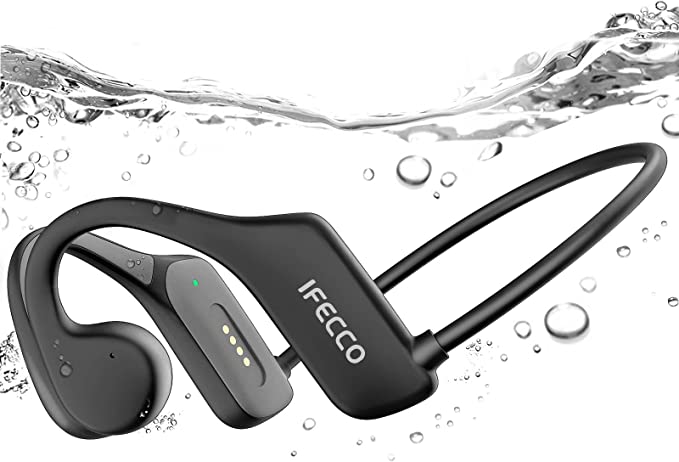The Material Science of a Perfect Shave: An Analysis of Gold, Titanium, and Steel in Shaver Foils
Update on Oct. 20, 2025, 7:27 a.m.
The act of shaving is a study in controlled violence. At a microscopic level, we are commanding a blade to sever a remarkably tough material—human hair, which has a tensile strength comparable to copper wire—at the very surface of a soft, pliable, and living substrate: our skin. The instrument that mediates this delicate operation, especially in an electric foil shaver, is the foil itself. It is a barrier, a guide, and a partner to the cutting blade. It is a marvel of micro-engineering. So, when a professional-grade tool like the Wahl 5 Star Vanish Shaver boasts of “micro-thin gold foils,” the scientifically curious mind should pause. Why gold? A metal synonymous with softness and opulence, in a role that seems to demand hardness and resilience. The answer reveals a fascinating story of engineering trade-offs, where the “best” material is a complex compromise between competing virtues.
But before we can appreciate why gold, a metal soft enough to be scratched by a fingernail, finds its way into a high-performance cutting tool, we must first understand the brutal engineering gauntlet that any shaver foil material must survive. This is the shaver foil’s trilemma: a balancing act between three critical, and often conflicting, properties. First is thinness. To deliver a truly close shave, the barrier between the blade and the base of the hair must be as thin as possible, often measured in mere micrometers. Second is strength. This ultra-thin sheet must endure the stress of daily use, the vibration of the motor, and resist damage from accidental bumps without tearing or deforming. Third, and perhaps most importantly, is biocompatibility. The foil is in intimate, frictional contact with the skin. It must be non-toxic, non-allergenic, and exceptionally smooth to glide without causing irritation, a condition often clinically referred to as contact dermatitis. The quest for the perfect shave is, therefore, a quest for the perfect material that can resolve this trilemma.

The Case for Gold: Beyond Luxury, Into Biocompatibility
Gold’s inclusion in a shaver foil is the most counter-intuitive, and thus, the most scientifically interesting. With a Vickers hardness of around 25 HV, it is substantially softer than common stainless steel (around 200 HV). On the surface, this seems like a fatal flaw. But this overlooks gold’s other, more subtle superpowers. Its primary advantage lies in its profound chemical inertness. Gold is one of the most non-reactive metals, meaning it strongly resists corrosion from sweat, sebum, and water. More critically, this inertness makes it exceptionally biocompatible.
A significant portion of the population suffers from metal hypersensitivity, with nickel allergy being a primary culprit. The American Academy of Dermatology (AAD) identifies it as one of the most common causes of allergic contact dermatitis. Many alloys, including numerous grades of stainless steel, contain nickel as a key component. For individuals with this sensitivity, a standard foil shaver can become an instrument of torment, leaving behind redness, itching, and bumps. Gold, being naturally nickel-free and hypoallergenic, provides a safe harbor. It pacifies the skin’s immune response, making it the material of choice for sensitive skin. Furthermore, gold possesses remarkable ductility—the ability to be drawn into thin sheets without breaking. This property is precisely what allows for the creation of “micro-thin” foils that are both continuous and uniform, a critical factor for achieving a close, non-irritating shave. The use of gold is not an act of luxury; it’s a deliberate, dermatological choice to prioritize skin safety and comfort over raw durability.
The Challenger - Titanium: The Aerospace Alloy on Your Face
If gold’s primary virtue is its gentle diplomacy with the skin, our next contender enters the ring with a reputation forged in the crucibles of aerospace and medical science: titanium. Often used in high-end shavers, either as a solid foil or, more commonly, as a Physical Vapor Deposition (PVD) coating on a steel base, titanium presents a different set of compromises. Its most lauded characteristic is its exceptional strength-to-weight ratio. Medical-grade titanium alloys like Ti-6Al-4V boast a Young’s Modulus (a measure of stiffness) of around 113.8 GPa, making them incredibly robust and durable, capable of withstanding the rigors of high-frequency oscillation without fatigue.
Like gold, titanium is supremely biocompatible and hypoallergenic, which is why it’s the gold standard for surgical implants, from hip joints to dental fixtures. It forms a stable, passive oxide layer on its surface that prevents it from reacting with the human body. This makes it another excellent choice for users with nickel allergies or generally sensitive skin. However, titanium is harder and less ductile than gold, making its formation into micro-thin foils a more complex and expensive manufacturing process. This is why PVD coating is a popular solution; it deposits a very thin, hard, and hypoallergenic layer of titanium nitride onto a more easily formed stainless-steel substrate, aiming to combine the strength and skin-friendliness of titanium with the cost-effectiveness of steel. Titanium represents a shift in philosophy: prioritizing durability and strength while maintaining excellent biocompatibility.
The Workhorse - Stainless Steel: The Economics of Engineering
Finally, we arrive at the ubiquitous workhorse of the shaver world: stainless steel. Alloys like 316L are an engineering marvel of economy and performance. They offer a fantastic balance of properties that make them suitable for a vast range of applications, including shaver foils. Stainless steel is strong, relatively easy to manufacture, and, as its name suggests, highly resistant to corrosion and rust. Its hardness ensures that the delicate perforations in the foil maintain their shape over time, providing a consistent cut.
From a purely mechanical standpoint, steel is an excellent choice. The primary drawback, as previously mentioned, is the presence of nickel in many common alloys, which is used to stabilize its austenitic crystal structure and enhance its formability. While many people can use stainless steel foils without any issue, for those with sensitivities, it remains a potential source of irritation. Manufacturers have developed “surgical grade” or low-nickel stainless steels to mitigate this, but the risk is not entirely eliminated. Stainless steel’s dominance is a testament to its “good enough” performance across all metrics for the majority of users, combined with a manufacturing cost that makes the technology accessible. It represents the pragmatic, economic solution to the foil trilemma, delivering solid performance at a reasonable price point.

Conclusion: A Calculated Compromise for Every Contour
The material of a shaver foil is not a simple choice of “good, better, best.” It is a masterclass in engineering compromise, tailored to different priorities. The gold foil on a device like the Wahl Vanish is not there for show; it is a calculated decision to prioritize biocompatibility and gentleness, offering a sanctuary for sensitive skin. Titanium, in its turn, champions strength and durability while matching gold’s hypoallergenic credentials, appealing to those who desire longevity. And stainless steel remains the steadfast and democratic choice, providing reliable performance for the masses.
By understanding the science behind these material selections, we transform from passive consumers into informed users. We can look past the marketing and appreciate the intricate dance of chemistry, physics, and dermatology that occurs every time we shave. The true vanishing act is not just the disappearance of stubble, but the disappearance of the notion that everyday objects are simple. They are, in fact, repositories of immense scientific ingenuity, each telling a story of problems solved and compromises brilliantly made.


















